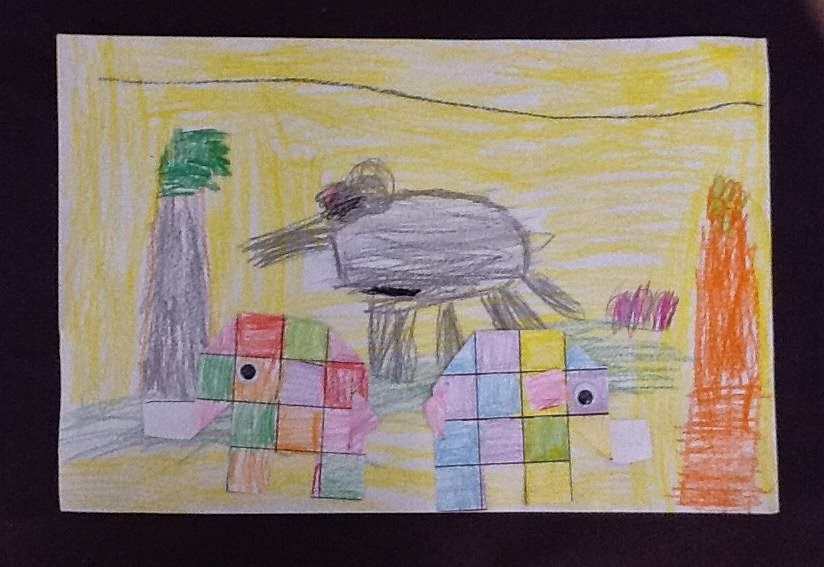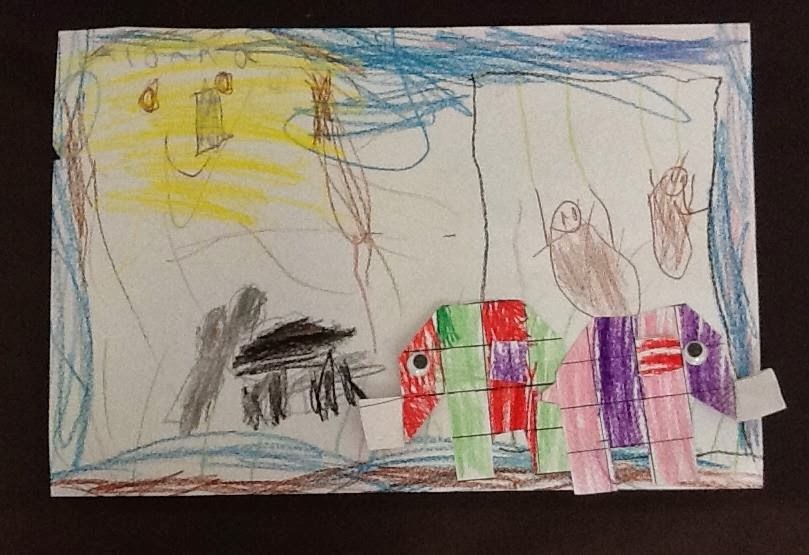Okay, I'm hoping for some feedback from this post because this is an issue I face consistently and there has to be a solution out there somewhere on how to fix it. So, someone, anyone, everyone, share some ideas on what works for you.

I know that in the general classroom, students often illustrate along with their assignments and then add labels to identify the purposes of the illustrations. This a pet peeve of mine when it spills over into the art room. I start in Kindergarten telling students that we are not looking for labeling or word bubbles in art work. I assure them that they are such good artist that it is not necessary to label to let me or anyone else know what their drawing represents. It always seems to begin when they draw that first picture of their family and everyone receives that label...Dad, Mom, Brother, Dog, etc. By 5th grade you would expect that I would have them trained but I am still reminding my students to drop the labels. I've gotten to the point where I tell offenders that in my mind their art just dropped from being art to becoming a classroom project and that I am so disappointed to see a beautiful artwork disfigured. I honestly have students telling me they never heard me say don't add the words. I refuse to post their work to their Artsonia galleries if there are words written across the front. Just to clarify, art can be made up of words and words can be the focus of art especially in some wonderful pop art examples, this is not what I am referring to with this rant!
So someone, share some magic with me.
 All of my fourth grade students created snowflake prints back before the holidays. I wrote about the process here in December. One class was still working on a previous lesson and missed out on the printing. It is a really fun project and the students all seem to really enjoy it. With that in mind, I began thinking about a snowflake cutting book on my bookshelf that featured valentines. My book was written by Robert Kelly. I can't locate it on Amazon but here is a similar book by Kelly. I selected several patterns and ran copies for the students to chose from. I like the style of this book because each pattern has folding instructions attached at the top of the page. Week one they cut valentine snowflakes and week two we printed on red and pink paper using red and white tempera paints. I wanted to share a few of the beautiful snowflakes they completed with you.
All of my fourth grade students created snowflake prints back before the holidays. I wrote about the process here in December. One class was still working on a previous lesson and missed out on the printing. It is a really fun project and the students all seem to really enjoy it. With that in mind, I began thinking about a snowflake cutting book on my bookshelf that featured valentines. My book was written by Robert Kelly. I can't locate it on Amazon but here is a similar book by Kelly. I selected several patterns and ran copies for the students to chose from. I like the style of this book because each pattern has folding instructions attached at the top of the page. Week one they cut valentine snowflakes and week two we printed on red and pink paper using red and white tempera paints. I wanted to share a few of the beautiful snowflakes they completed with you.
















